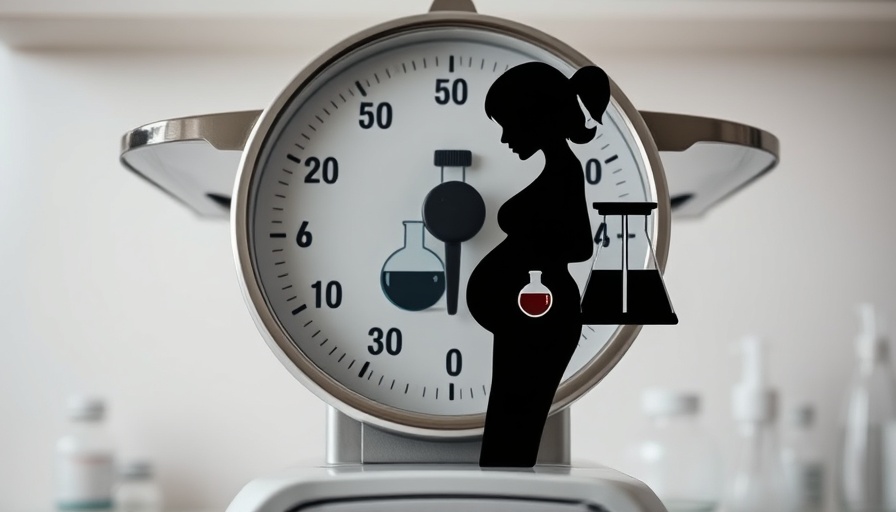
Understanding the Impact of Prenatal Environmental Chemicals on Childhood Development
As childhood obesity rates soar, researchers are seeking the underlying causes behind the worrying trend. Recent findings from a study conducted by the Barcelona Institute for Global Health highlight the potential role of prenatal exposure to environmental chemicals in shaping early childhood development, specifically in influencing BMI (Body Mass Index) trajectories among children. With over 340 million children classified as overweight or obese worldwide, the health implications of these findings are crucial.
The Role of Endocrine-Disrupting Chemicals (EDCs)
Endocrine-disrupting chemicals, or EDCs, are substances that can interfere with the body's hormonal system. Common sources of EDCs include everyday items like plastics, cosmetics, and pesticides. This study focused on measuring the concentrations of various EDCs found in the urine and blood of 1,911 pregnant Spanish women, offering insights into real-world chemical exposures.
By tracking how these exposures impacted the BMI of the children from birth through age nine, the researchers provided a comprehensive analysis of how EDCs might disrupt normal growth patterns. For example, certain EDCs were linked to lower birth weights and accelerated weight gain later, emphasizing the critical role of a healthy prenatal environment.
Uncovering Connections: Specific Chemicals and Growth Changes
The study’s findings unveiled significant correlations between specific EDCs, such as hexachlorobenzene (HCB) and dichlorodiphenyldichloroethylene (DDE), and abnormal BMI growth patterns. Children exposed to these chemicals displayed lower birth weights, yet paradoxically exhibited accelerated weight gain in early childhood. In contrast, some chemicals increased birth size’s associated postnatal BMI increases, unraveling a complex relationship between prenatal exposure and childhood obesity.
The Cumulative Effect of Chemical Exposure
One standout aspect of the research was its focus on chemical mixtures rather than individual exposure. The analysis revealed that combinations of different EDCs could exacerbate risks of accelerated BMI growth, suggesting that the accumulation of chemicals has a more pronounced effect than previously understood. This insight emphasizes the need for further research into how multiple exposures interact, especially given the prevalence of EDCs in everyday life.
Health Implications and What They Mean for Families
These findings bring to light a concerning reality: environmental chemicals could be partially responsible for the obesity epidemic affecting children today. Rapid weight gain in early childhood is closely linked with a higher risk of developing health issues later in life, including cardiovascular diseases, diabetes, and psychological impacts such as low self-esteem. For parents and guardians, understanding these risks reinforces the importance of a healthy prenatal environment.
Taking Proactive Steps Towards a Healthier Future
Given this unsettling research, families are encouraged to adopt proactive measures to mitigate exposure to harmful chemicals. This could include choosing natural body care products, avoiding plastic where possible, and selecting organic food options that are less likely to contain harmful pesticides. By prioritizing a clean and safe environment, parents can help support their child's healthy development.
Actionable Insights for Holistic Health
Beyond prenatal actions, maintaining a healthy lifestyle as a family can enhance overall well-being. Focus on nutrition by introducing nutrient-dense foods into meals, promoting physical fitness through active play and structured exercises, and encouraging mindfulness and emotional well-being through regular stress management techniques like yoga and meditation. By addressing not just the physical but also the emotional aspects of health, families can create a supportive ecosystem for growth.
In conclusion, the insights from this study serve as a call to action for parents, health practitioners, and policymakers alike. Together, understanding the relationship between environmental chemicals and child health can pave the way for initiatives aimed at fostering healthier generations. As we continue to explore these connections, let’s commit to creating environments that nurture well-being from the very beginning.
 Add Row
Add Row  Add
Add 




Write A Comment